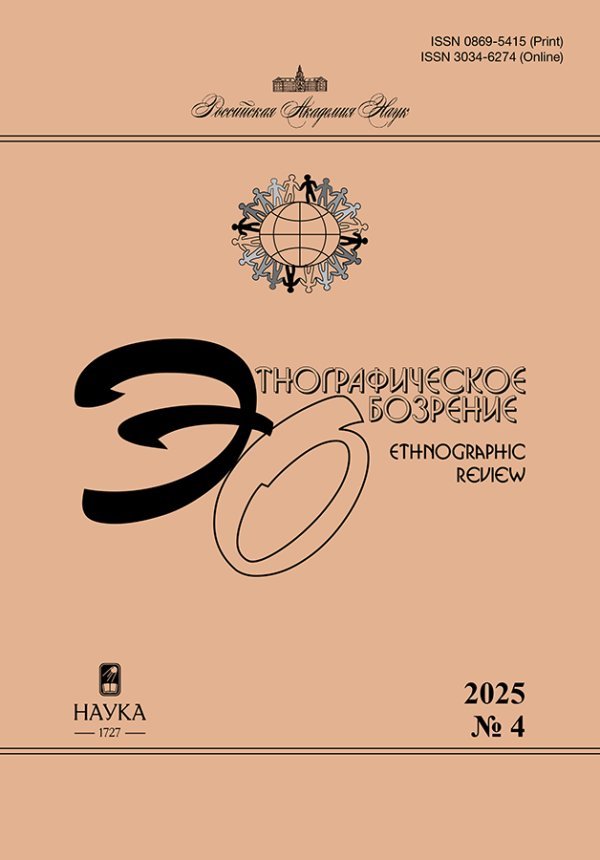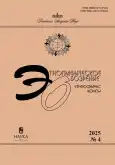The Ta'ziyeh: Sacred Act of Muslims in India and Iran
- Authors: Kinyaeva A.V.1
-
Affiliations:
- Institute of Ethnology and Anthropology, Russian Academy of Sciences
- Issue: No 4 (2025)
- Pages: 44-56
- Section: Special Theme of the Issue: Ethnography of Performing Arts (guest editor S.I. Ryzhakova)
- URL: https://stomuniver.ru/0869-5415/article/view/697014
- DOI: https://doi.org/10.31857/S0869541525040045
- ID: 697014
Cite item
Abstract
The annual commemorations of Imam Hussein and his companions, who have tragically died in Karbala in 680, are an important part of the religious life of Shia Muslims around the globe. In various regions complex rituals have emerged aiming at collective reproduction and recreation of the events of Karbala. The word Taʻziyeh means “condolence” in Arabic. In Iranian culture, Taʻziyeh is known as a passion play inspired by the tragic death of Hussein. In South Asia and the Caribbean, the word “taziya” refers to miniature models of the mausoleums of Husain, used in ritual processions held in the month of Muharram. The ritual actions associated with Taʻziyeh have absorbed many local traditions. The traditions of the Shia communities of Northern India (particularly that of Lucknow) and Iran are particularly interesting for their undeniable connection and prominent differences. Comparing the traditions of the Shia communities in India and Iran, I will consider the transformation of the performing arts associated with Taʻziyeh, and will attempt to trace how grief is expressed within the framework of performing rituals associated with Taʻziyeh.
About the authors
A. V. Kinyaeva
Institute of Ethnology and Anthropology, Russian Academy of Sciences
Author for correspondence.
Email: avkinyaeva@gmail.com
ORCID iD: 0009-0005-9862-988X
аспирант, стажер-исследователь центра азиатских и тихоокеанских исследований 32a Leninsky prospekt, Moscow, 119991, Russia
References
- Aghaie, K.S. 2010. The Origins of the Sunnite-Shiite Divide and the Emergence of the Taʻziyeh Tradition. In Eternal Performance: Taʻziyeh and Other Shiite Rituals, edited by P.J. Chelkowski, 42–51. Calcutta: Seagull.
- Beeman, W.O., and B.M. Ghaffari. 2010. Acting Styles and Actor Training in Taʻziyeh. In Eternal Performance: Taʻziyeh and Other Shiite Rituals, edited by P.J. Chelkowski, 74–93. Calcutta: Seagull.
- Bolshakov, O.G. 1998. Istoriia Halifata [History of the Caliphate]. Vol. 3, Mezhdu dvuh grazhdanskih voin (656–696) [Between Two Civil Wars (656–696)]. Moscow: Vostochnaia literatura.
- Chelkowski, P.J. 2010. From the Sun-Scorched Desert of Iran to the Beaches of Trinidad: Taʻziyeh’s Journey from Asia to the Caribbean. In Eternal Performance: Taʻziyeh and Other Shiite Rituals, edited by P.J. Chelkowski, 399–420. Calcutta: Seagull.
- Corbin, H. 2013. Istoriia islamskoi filosofii [History of Islamic Philosophy]. Moscow: Akademicheskii Proekt; Sadra.
- Hasnain, N. 2016. The Other Lucknow: An Ethnographic Portrait of a City of Undying Memories and Nostalgia. New Delhi: Vani Prakashan.
- Hyder, S.A. 2006. Reliving Karbala: Martyrdom in South Asian Memory. Oxford: Oxford University Press.
- Kinyaeva, A.V. 2023. Golos skorbi: noha, soz i marsiia vo vremia muharrama v Lakhnau [Voice of Sorrow: Noha, Soz and Marsiya during Muharram in Lucknow]. Antrpologii/Antrpologies 2: 240–252.
- Naiyer, M. 2005. marsiya khvaani ka fan [The Art of Marsiya Khvaani]. Karachi: Aaj Ki Kitaben.
- Pettys, R.A. 2010. The Taʻziyeh of the Martyrdom of Hussein. In Eternal Performance: Taʻziyeh and Other Shiite Rituals, edited by P.J. Chelkowski, 19–41. Calcutta: Seagull.
- Schimmel, A. 1986. Karbala and the Imam Husayn in Persian and Indo-Muslim literature. Al-Serat XII.
- Schimmel, A. 1999. Mir islamskogo mistitcizma [Mystical Dimensions of Islam]. Moscow: Enigma.
- Suvorova, A.A. 1995. Nostal’giia po Lakhnau [Nostalgia of Lucknow]. Moscow: Tadem.
- Suvorova, A.A. 1999. Musul’manskie sviatye Yuzhnoi Azii XI–XV vekov [Muslim Saints of South Asia in the llth–15th Centuries]. Moscow: Institut Vostokovedeniia RAN.
Supplementary files











